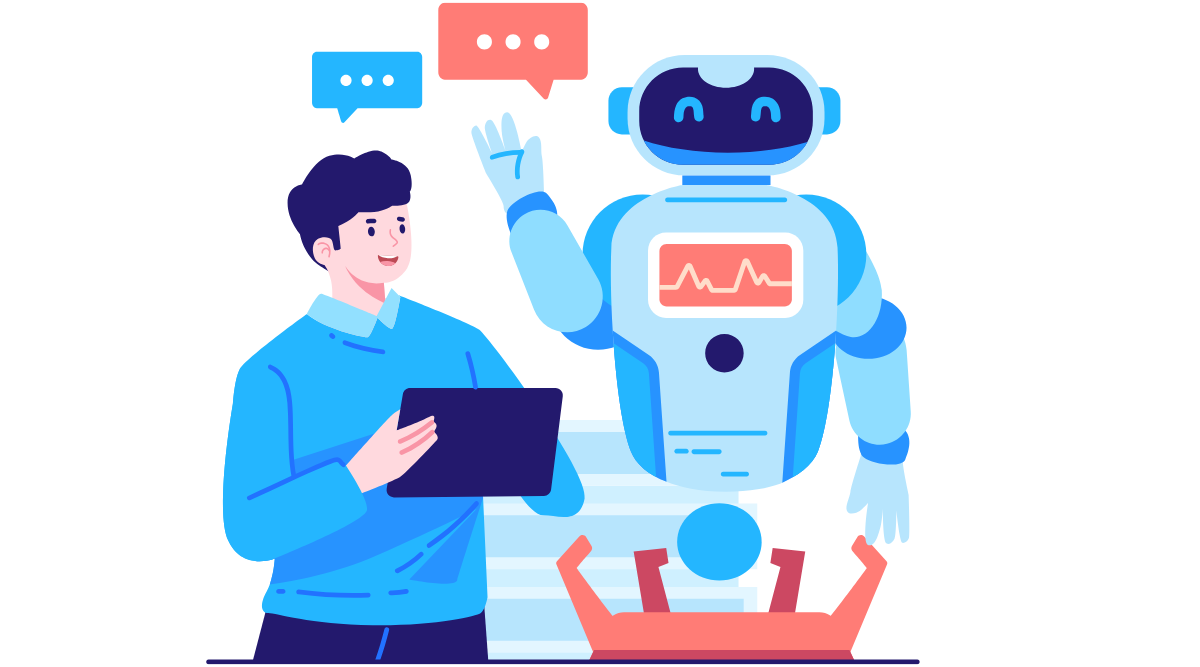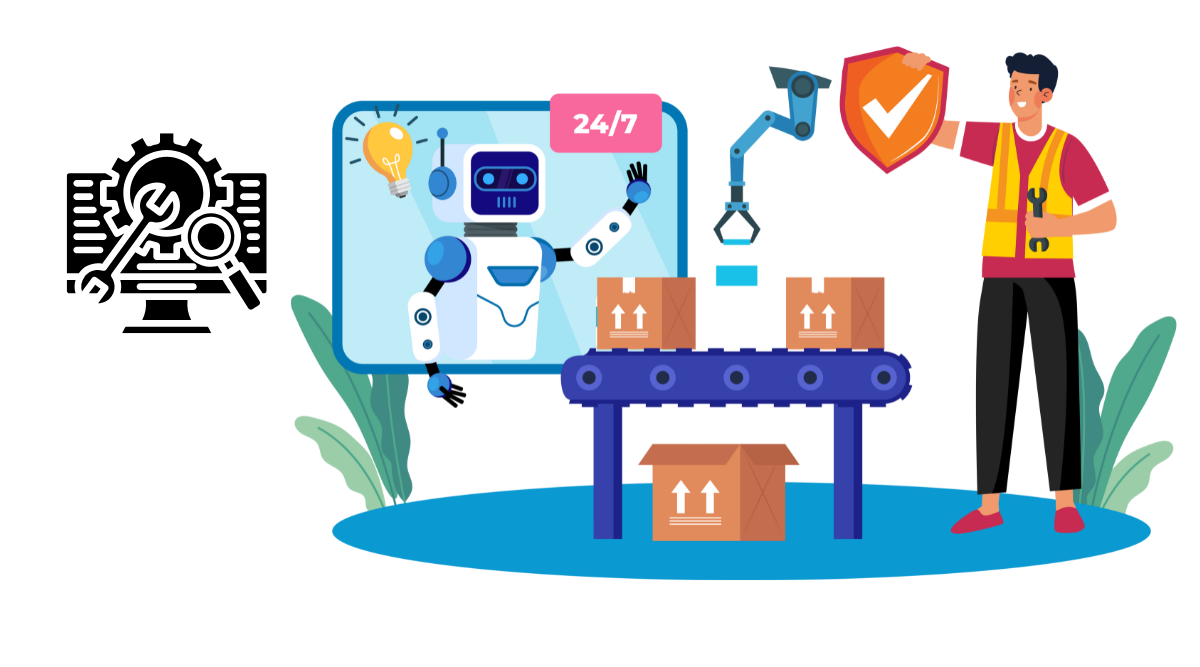AI-Powered Strategies to Boost Corporate L&D Engagement
Discover how AI transforms corporate L&D engagement. Explore strategic insights, AI tools, and innovative methods to enhance employee training.

In an era where continuous learning is paramount for any organization aiming to stay competitive, the integration of Artificial Intelligence (AI) in corporate Learning and Development (L&D) processes has become increasingly significant. AI offers unparalleled opportunities to enrich learning experiences, personalize content, and engage employees more effectively. Companies like Floworks.ai are spearheading the evolution of AI-driven solutions that enhance corporate training initiatives. By adopting AI technologies, businesses can revolutionize how they deliver learning content, evaluate employee progress, and tailor training programs to individual needs. This blog delves into the transformative role of AI in corporate L&D, assessing strategies, tools, and techniques that can significantly boost engagement and success in training programs.
The Role of AI in Modern Corporate L&D
Why AI Matters in Today's Corporate Learning Landscape
The modern work environment is characterized by rapid changes in technology and business practices, necessitating agile learning solutions. AI contributes significantly by addressing the limitations of conventional L&D methods, which often struggle to keep pace with the evolving demands of the workforce. Through AI, L&D programs can deliver highly personalized and adaptive learning experiences. This technology enables continuous analysis of employee learning data, allowing programs to be dynamically adjusted to each learner's pace and style.
Moreover, AI's predictive analytics helps identify skills gaps, foresee future training needs, and streamline learning pathways accordingly. By providing such tailored education, organizations can improve employee competence and job satisfaction.
Comparing Traditional L&D Methods with AI-driven Approaches
Traditional L&D programs typically adopt a one-size-fits-all approach, utilizing standard curricula, mass content delivery, and delayed assessments. While effective to some extent, these methods often fall short in catering to individual learner needs and offering real-time insights.
In contrast, AI-driven L&D benefits from:
- Personalized Content Delivery: Tailoring learning experiences to individual preferences and abilities.
- Automation: Streamlining scheduling, assessments, and feedback processes without human intervention, thus saving time and resources.
- Real-time Analytics: Providing immediate insights into learning progress and effectiveness, allowing for timely interventions.
These advantages help foster a more engaged learning environment conducive to better skill acquisition and retention.
Key Technologies Driving AI in L&D
Several cutting-edge technologies form the backbone of AI in L&D:
- Machine Learning Algorithms: Crucial for personalizing learning paths based on data analysis of user interactions.
- Natural Language Processing (NLP): Facilitates chatbots and virtual assistants that enhance learner interaction and support.
- Learning Management Systems (LMS) with AI Integration: Platforms like those offered by Floworks.ai enable easy integration of AI features, offering personalized learning environments and analytics-driven insights.
AI technologies continue to evolve, promising even more sophisticated tools for corporate training in the future.
Leveraging AI-driven Learning and Development
Personalized Learning Paths and AI
One of the most transformational impacts of AI in corporate training is the capacity to create personalized learning paths. This approach ensures that learners receive content that is relevant and delivered in a format that suits their learning style. AI systems analyze user data to recommend courses, modules, and materials that align with individual career goals and personal interests. As a result, employees remain more engaged and motivated to complete their training programs.
Automating Content Delivery for Maximum Impact
Automated content delivery is another significant benefit of AI in L&D. AI-powered systems can distribute learning materials at optimal times, ensuring maximum engagement and retention. These systems consider various factors, such as past learner interactions and preferences, to determine the best timing and format for content delivery. Automatically curated content playlists guide employees through progressive learning journeys, enhancing their overall educational experience.
Utilizing AI for Real-time Feedback and Assessment
Real-time feedback plays a critical role in effective learning. AI enables continuous assessment through quizzes, simulations, and instant feedback, allowing learners to identify and address knowledge gaps promptly. This immediacy in feedback not only boosts confidence but also enhances learning efficiency. Employees are not left waiting for assessments, enabling them to progress faster and more effectively.

AI Tools Revolutionizing Employee Training
Top AI Tools for Enhancing Training Effectiveness
AI tools are rapidly transforming the training landscape by offering various functionalities that enhance the learning experience. LMS platforms equipped with AI provide personalized course recommendations, dynamic content delivery, and insightful analytics. Virtual reality (VR) and augmented reality (AR) tools also contribute by creating immersive learning environments that better simulate real-world scenarios.
Integrating AI Solutions with Existing Software
Integrating AI into current L&D frameworks requires seamless collaboration between AI tools and existing software systems. This integration enables comprehensive tracking of learner progress across different platforms, providing a consolidated view that informs strategic L&D decisions. Smooth integration also ensures that AI enhancements complement existing training modules rather than disrupting them.
Case Studies: Successful AI Implementations
Organizations that have implemented AI-enhanced L&D programs often report significant improvements in employee engagement and training outcomes. For instance, a multinational corporation that integrated AI-driven analytics into its L&D framework saw a 30% increase in course completion rates. Another company used AI to personalize learning modules, which led to a 40% boost in employee satisfaction scores related to training programs. Such success stories underscore the vast potential of AI to transform corporate L&D.
By understanding and integrating AI into their learning agendas, companies not only improve immediate educational outcomes but also prepare their workforce for the future, creating a resilient, forward-thinking organization. As we explore the subsequent sections, we will further uncover strategic AI-driven approaches that enhance engagement in L&D programs.
Strategies to Increase Engagement in L&D Programs with AI
Crafting Engaging Learning Experiences with AI
Enhancing engagement in Learning and Development (L&D) programs involves crafting experiences that resonate with learners on multiple levels. AI empowers organizations to create tailor-made experiences by analyzing data on learner behaviors, preferences, and outcomes. These insights allow for the development of customized learning modules that not only attract interest but also align with the strategic goals of both the organization and the individual learner.
AI can facilitate interactive content, such as simulations, scenario-based learning, and dynamic quizzes that adapt in real time to a learner’s input. This level of interaction increases participation and deepens understanding, fostering an immersive learning environment. For companies like Floworks.ai, it’s about blending state-of-the-art AI systems with human-centric design to develop learning paths that genuinely captivate and motivate employees.
Gamification and AI: A Perfect Pairing
Gamification has proven to be an effective strategy for boosting engagement by incorporating game elements into traditional learning environments. When combined with AI, gamification can be taken to new heights, with AI dynamically adjusting challenges based on real-time learner data. This not only keeps learners engaged but also places them in an optimal state of flow.
Imagine an L&D platform that uses AI to modify a training challenge in response to a learner’s performance, offering hints or increasing difficulty. This real-time adaptability ensures that learners remain in a “sweet spot” where the material is neither too easy nor too hard, thus maintaining their interest and motivation.
AI-powered Analytics for Monitoring Engagement Levels
For any L&D initiative, understanding engagement levels is crucial for continuous improvement. AI brings advanced analytics to the table, enabling organizations to gauge engagement thoroughly and accurately. These systems monitor a variety of engagement metrics such as completion rates, interaction frequencies, and content accessibility times.
Leveraging AI-powered analytics, platforms like Floworks.ai can provide deeper insights into how employees interact with training materials. This data allows training managers to identify patterns, recognize disengaged learners early, and adjust strategies accordingly to maintain high levels of engagement. By understanding these nuances, companies can create a more responsive L&D environment that encourages active participation.
AI and the Future of Corporate Learning
Predicted Trends in AI-driven L&D
As we look towards the future of corporate learning, several trends are anticipated to shape the L&D landscape:
- Adaptive Learning Environments: AI will continue to refine adaptive learning systems, which adjust in real time to learner behavior and feedback.
- Increased Use of Virtual and Augmented Reality: These technologies will further enhance immersive learning experiences, aided by AI to tailor these simulations to individual needs.
- More Robust Data Utilization: AI's ability to analyze and act on complex data sets will enable more nuanced learning paths, with predictive analytics playing a pivotal role in preempting learner needs and trends.
Preparing Your Workforce for Future AI Integrations
Preparing for a future steeped in AI integration requires a strategic approach. Organizations need to foster a culture of openness towards AI by educating their workforce on the capabilities and benefits of AI in L&D. Regular workshops, informative sessions, and hands-on training with AI tools can help ease the transition, allowing employees to become comfortable and proficient with these technologies.
Additionally, implementing pilot programs can demonstrate the value of AI in a controlled environment, providing tangible results that help in securing organizational buy-in.
Ethical Considerations in Using AI for Training
The growing role of AI in L&D brings to light important ethical considerations. It's imperative to address concerns surrounding:
- Data Privacy: Protecting personal data should be a top priority, with robust security protocols and transparent data usage policies.
- Bias and Fairness: AI models must be continually assessed to ensure they are free from biases that could lead to inequitable training outcomes.
- Human Oversight: While AI offers substantial benefits, human oversight ensures decisions are ethically sound and aligned with organizational values.
By considering these factors, companies like Floworks.ai are committed to implementing AI responsibly, ensuring that AI-driven advancements enhance rather than hinder learning environments.
Challenges and Opportunities in AI-enhanced L&D
Overcoming Barriers to AI Adoption in L&D
Despite the clear advantages of AI-enhanced L&D, barriers to adoption still exist. These include resistance to change, budget constraints, and technology integration challenges. To overcome these barriers, organizations need to:
- Communicate Benefits Clearly: Clearly communicate how AI will benefit both the organization and employees.
- Start Small: Implement pilot programs to demonstrate success and gradually expand.
- Provide Training: Equip L&D teams with the knowledge and skills needed to leverage AI effectively.
Maximizing Opportunities with AI-enhanced Training
The opportunity to elevate L&D with AI is vast. Companies can leverage AI to create more personalized, engaging, and effective training programs that meet the diverse needs of their workforce. By fostering a culture that embraces innovation and continuous learning, organizations can harness the full potential of AI to drive development and retain top talent.
Ensuring Data Privacy and Security in AI Implementations
Ensuring data privacy and security is crucial when implementing AI in L&D. Organizations must adhere to stringent data protection regulations and employ advanced security measures to safeguard sensitive information. This responsibility extends to regularly auditing AI systems to maintain trust and compliance.
Floworks.ai, for instance, emphasizes rigorous data security protocols and transparent operations as fundamental components of its AI solutions, ensuring that clients can confidently adopt AI technologies with assurance in their data integrity.
By addressing these challenges and leveraging the opportunities presented by AI, companies can not only transform their L&D programs but also establish themselves as leaders in the next generation of corporate education.
Conclusion
As we have explored, the integration of AI into corporate learning and development (L&D) offers profound benefits that extend far beyond traditional methods. By fostering personalized learning paths, automating content delivery, and providing real-time feedback, AI not only enhances the learning experience but also increases engagement among employees. Companies like Floworks.ai are at the helm of this transformation, offering advanced AI-driven tools that align with the evolving needs of modern businesses.
The shift toward AI-enhanced L&D is not merely a trend – it's a fundamental reimagining of how organizations can cultivate a culture of continuous learning and development. Employees are no longer passive recipients of generic content; instead, they engage with dynamically tailored programs that meet their unique professional goals and learning preferences. This results in more skilled, satisfied, and motivated workforces that are well-equipped to navigate the challenges of an ever-changing business environment.
Looking ahead, the continued evolution of AI technologies promises even greater opportunities for L&D innovation. Organizations that embrace these advancements today stand to gain significant competitive advantages, preparing their teams for the demands of tomorrow's workplace. Ultimately, the strategic integration of AI in corporate learning signals a movement toward a more agile, responsive, and effective approach to workforce development. By adopting these techniques, companies not only improve performance and retention but also foster an enriched learning culture that supports long-term growth.
Frequently Asked Questions
How does AI improve corporate L&D engagement?
AI enhances corporate L&D engagement by offering personalized learning experiences that cater to individual preferences and goals. Through AI's predictive analytics and data-driven insights, training programs are optimized to meet learners' needs better, leading to increased motivation and completion rates. Real-time feedback and interactive learning environments further foster engagement by ensuring that training is both relevant and impactful.
What are the cost benefits of implementing AI in L&D?
Implementing AI in L&D can lead to substantial cost savings for organizations. AI reduces the need for manual intervention in content delivery and assessment, saving time and resources. Personalized learning paths and automated processes decrease training costs by minimizing wasted efforts on ineffective strategies. Moreover, AI-powered analytics help in identifying the most efficient training methods and content, ensuring investments in learning programs yield the highest returns.
Can AI replace traditional training methods entirely?
While AI offers significant advancements in L&D, it's unlikely to completely replace traditional training methods. Instead, AI serves as a complementary tool that enhances and augments these methods. There are occasions when human interaction and hands-on experience are irreplaceable, such as in areas requiring soft skills development or complex problem-solving. The most effective L&D programs combine AI-driven innovation with traditional methods to provide a balanced, comprehensive training approach.
How can companies ensure the ethical use of AI in training?
Companies can ensure the ethical use of AI in training by implementing robust data privacy and security measures. Transparency with employees about how AI is being used and what data is being collected is crucial. Organizations should also focus on eliminating biases in AI algorithms to promote fairness and inclusion. Regular audits, employee feedback, and staying informed about best practices in AI ethics will help maintain responsible AI usage in L&D initiatives.
What future trends can we expect in AI-driven L&D?
Future trends in AI-driven L&D include the increased use of immersive technologies like virtual reality (VR) and augmented reality (AR) to create realistic training simulations. Additionally, AI will continue to evolve in providing deeper insights into learning behaviors and outcomes. Expect to see more sophisticated AI systems capable of understanding and adapting to emotional cues, making engagement even more interactive and personalized. As AI continues to develop, L&D programs will become smarter and more intuitive, matching the pace of technological advancement and business evolution.


